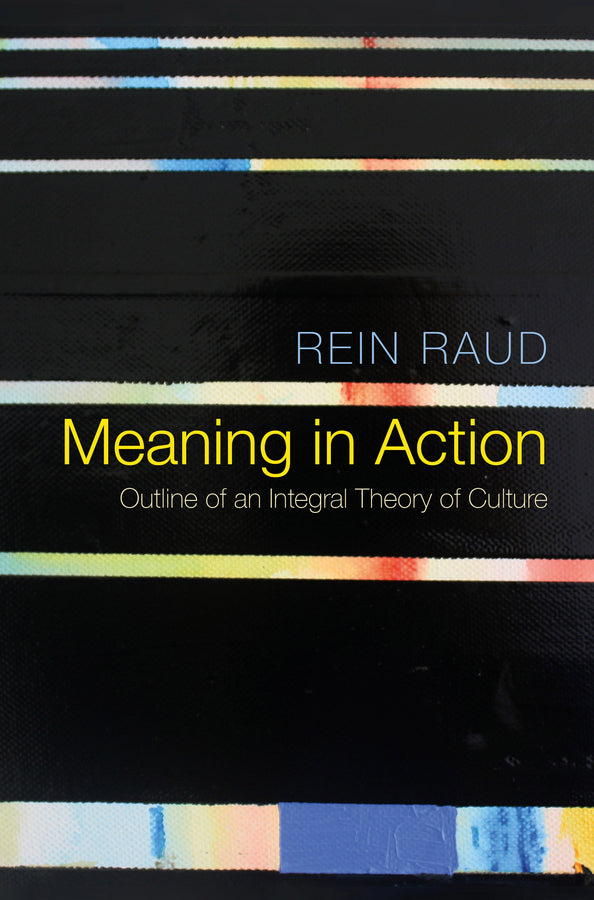Description
Discover a groundbreaking exploration of culture with Rein Raud's insightful book. This comprehensive text, published by John Wiley & Sons in 2016, develops an innovative theory of culture that understands it as a dynamic system of texts and practices. With 240 pages of rich analysis, this book is essential for students and scholars in social sciences and humanities alike. Raud elegantly blends elements from anthropology, sociology, cultural studies, semiotics, and philosophy to provide a multifaceted view of how people create meaning in their life-worlds. By treating culture both as the tangible outputs of signifying acts and as a space of meaningful practices, this work creates a dialogue between high and popular culture across Western and Asian traditions. Readers will find well-illustrated examples that traverse both contemporary and historical contexts, including a detailed examination of Italian poetry from the 13th century and a look at the vibrant art scene in Eastern Europe during the 1990s. This book is a must-have for anyone interested in culture, its interpretation, and its impact on society. Please note that shipping for this item is free, and delivery may take up to 6 weeks. Once your order is placed, it cannot be canceled. Dive into this major contribution to cultural theory today.
Note: Shipping for this item is free. Please allow up to 6 weeks for delivery. Once your order is placed, it cannot be cancelled.
Condition: BRAND NEW
ISBN: 9781509511259
Year: 2016
Publisher: John Wiley & Sons (UK)
Pages: 240
Description:
In this important new book Rein Raud develops an original theory of culture understood as a loose and internally contradictory system of texts and practices that are shared by intermittent groups of people and used by them to make sense of their life-worlds. This theory views culture simultaneously in two ways: as a world of texts, tangible and shareable products of signifying acts, and as a space of practices, repeatable activities that produce, disseminate and interpret these clusters of meaning. Both approaches are developed into corresponding models of culture which, used together, are able to provide a rich understanding of any meaning in action. In developing this innovative theory, Raud draws on a wide range of disciplines, from anthropology, sociology and cultural studies to semiotics and philosophy. The theory is illustrated throughout with examples drawn from both high and popular culture, and from Western and Asian traditions, dealing with both contemporary and historical topics. The book concludes with two case studies from very different contexts one dealing with Italian poetry in the 13th century, the other dealing with the art scene in Eastern Europe in the 1990s. This timely and original work makes a major new contribution to the theory of culture and will be welcomed by students and scholars throughout the social sciences and humanities.
Note: Shipping for this item is free. Please allow up to 6 weeks for delivery. Once your order is placed, it cannot be cancelled.
Condition: BRAND NEW
ISBN: 9781509511259
Year: 2016
Publisher: John Wiley & Sons (UK)
Pages: 240
Description:
In this important new book Rein Raud develops an original theory of culture understood as a loose and internally contradictory system of texts and practices that are shared by intermittent groups of people and used by them to make sense of their life-worlds. This theory views culture simultaneously in two ways: as a world of texts, tangible and shareable products of signifying acts, and as a space of practices, repeatable activities that produce, disseminate and interpret these clusters of meaning. Both approaches are developed into corresponding models of culture which, used together, are able to provide a rich understanding of any meaning in action. In developing this innovative theory, Raud draws on a wide range of disciplines, from anthropology, sociology and cultural studies to semiotics and philosophy. The theory is illustrated throughout with examples drawn from both high and popular culture, and from Western and Asian traditions, dealing with both contemporary and historical topics. The book concludes with two case studies from very different contexts one dealing with Italian poetry in the 13th century, the other dealing with the art scene in Eastern Europe in the 1990s. This timely and original work makes a major new contribution to the theory of culture and will be welcomed by students and scholars throughout the social sciences and humanities.

